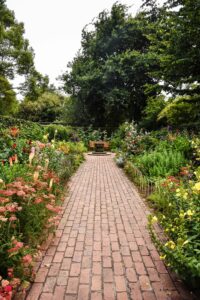Trees have an important role to play in the architectural design of a home, therefore we invited Adam Griggs, Managing Director of SMG Architects to share his knowledge and experience in this blog.

We often meet clients whose circumstances or desires have changed over time, prompting them to consider extending their property. I would therefore like to highlight the benefit that smaller scale work can have on the enjoyment of a home.
Even the subtlest of increase in space can often allow for huge improvements in functionality, feel, and flow. It’s the old adage of simple ingredients done well. It doesn’t have to be extravagant or lavish to have a big impact trees and architecture.
A well-designed extension will take into consideration both the building and landscape, with the most successful extensions providing a strong connection between both.
Location of extensions can be challenging in dense sites where trees have been allowed to become dominant. In some areas we will be dealing with trees which carry a TPO (Tree Protection Order) and so specialist advice will need to be sought from the Local Authority in the form of either a simple application to the council or, in more involved situations or designated land (such as AONB, Conservation areas etc) an Arboricultural Impact Assessment (AIA) will be needed.
These should not be looked upon with trepidation as a well worded and thought out AIA will allow you to achieve what you want while still respecting and enhancing the natural landscape.
The Kitchen
Regarding the design of the extension, simply getting the basics tastefully correct can hugely enhance the look and use of an area of your home, one such example is the kitchen.
It is probably the busiest room in the house, so creating a family friendly, relaxed and multifunctional space is high on the agenda for many homeowners.
An open-plan style kitchen may well provide the answer with a more social focus and the versatility to adapt its use. However, when faced with the complexity of improving the flow of the house and the challenge of creating a room with a variety of functions, the design of the extension is key to its success.
First, decide what you would like your extension to include – a kitchen, somewhere to eat, living area, desk space, storage, access to the garden. Then its size and shape – single or double storey, a lean to or side-return, or a rear addition.
Extensions And Natural Light
Some options will require less foundation work, some may need more structural considerations such as removing walls, disguising pillars or levelling floors and ceilings.
Extensions can also displace daylight so consider supplementing it with roof lights, lanterns or full-height glazed doors. Lastly, remember that your extension doesn’t have to be in the same style as your home but there should be some sense of cohesion.
In many of our projects, the results are testament to the passion and care that the clients displayed in seeing the projects through to completion. When successful, these small-scale extensions can create a real focal point of the home environment with a logical layout and usable space and the incorporation of external spaces.
The creation of a well-crafted extension is far from easy, but as designers we enjoy the challenge.
For further information contact Adam Griggs of SMG Architects









